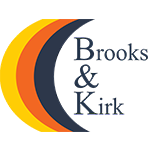Assessment Methods: Strengths and Limitations
When it comes to using different assessment methods, you need to know their strengths and limitations. This is so you can choose the right assessment method to use with your learner. Especially if your learner has additional needs, such as English as a second language. You will need to choose the best fitting assessment method, so that each learner has an equal opportunity to another.
Let’s have a quick recap of the different assessment methods, and then we can get into their strengths and limitations.
Assessment Methods
 When it comes to assessment methods, you’ll need to use a variety of them to assess your learners. So choosing the right one is important! There are a number of assessment methods to choose from when working as an NVQ Assessor.
When it comes to assessment methods, you’ll need to use a variety of them to assess your learners. So choosing the right one is important! There are a number of assessment methods to choose from when working as an NVQ Assessor.
- Observation
- Questioning
- Projects
- RPL
- Witness Testimony
- Work Products
So what are their strengths and limitations?
Observation
This is observing your learners perform a skill. This could be in the workplace or a learning environment. You could be watching them perform their job role, or some essential skills in their apprenticeship. Observation is one of the more popular assessment methods.
Strengths of Observations
Observations enable you to see the learner’s skills in action; you can see exactly what they are doing and how they would do it. When they make mistakes, you can see how they rectify them, and what can be done in those circumstances.
You can also assess several aspects of the criteria in one observation. This saves you time as the assessor and your learner’s time as well. There’s definitely a motivating factor to hitting a lot of criteria in one observation!
Limitations of Observations
The limitations of this assessment method tend to crop up depending on the sector. If, for example, the observation needs to be done in person and your learner works night shifts in a care home, it’s highly likely this will be inconvenient timing for you to assess. Likewise, if you’re carrying out an observation in a nursery setting, it’s unlikely you’ll be able to record the observation, so you’ll be left to deal with quickly scrawled notes and your memory.
Questioning
Another one of the more popular assessment methods, questioning is used to assess the understanding of your learner, as well as stimulate thinking. It gets the learner to think more about what you’re asking and how much they know.
Strengths of Questioning
Questioning can be of a variety; multiple-choice, short answers or a long essay style. Questions can be personalised for each learner, or you could make a question bank to use multiple times across different learners.
This assessment method is a good way of challenging learners and promoting their potential. The questions can target critical arguments, as well as being able to recognise skills. Sometimes oral questions suit learners more than written ones. For example, if the learner is dyslexic or has a visual impairment they might want to talk through their response.
Limitations of Questioning
Disadvantages of questioning could come down to what type of questions you use. Such as using closed questions. These only give you a ‘yes’ or ‘no’ answer so it’s hard to demonstrate knowledge when you can’t elaborate upon your initial answer. Sometimes the question writing process can be time-consuming. You may want to think about their written responses, as some could be copied or plagiarised.
Some elements of questioning can be hard for learners, such as essay-style questions. It may be good for some, but others might dread the thought of completing it this way. It’s important to have a variety and a varied approach.
If you’re new to teaching and want to understand how to adapt your approach to different learners, the Level 3 Award in Education and Training (AET) is a great place to start.
Projects
 Next on our list of assessment methods is Projects. Projects provide great ways in which you, as an assessor, can gather a lot of information at once. You could set a report or essay, or even a research task that your learner continues to do.
Next on our list of assessment methods is Projects. Projects provide great ways in which you, as an assessor, can gather a lot of information at once. You could set a report or essay, or even a research task that your learner continues to do.
Strengths of Projects
Projects tend to show if there are any gaps in your learner’s knowledge, for you to provide them with extra training (if needed). Projects are also a great way to set the assessments in a professional/vocational environment, while the learner gains experience in their working field.
The way projects are set out is also beneficial because they have a beginning, middle and end. This provides clear stages for formative feedback and reflection.
Limitations of Projects
A potential limitation with Projects is keeping your learner engaged. Projects may span over a few weeks or even months, and you need to be sure that they are fully motivated throughout the journey.
RPL (Recognition of Prior Learning)
Recognition of Prior Learning is when you take into account any previous qualifications your learner already has under their belt that prove they have the knowledge/understanding of elements of their current qualification.
Strengths of RPL
The main strength of RPL is that learners avoid repeating any area of a programme they have already covered. Instead, they can save time and move on. RPL provides a value factor when it comes to the work already achieved, as it won’t be going to waste.
Limitations of RPL
Whilst RPL can save time in the long run, it isn’t as simple as it sounds. As the assessor, you will need to cross-reference the criteria the learner has previously covered and ensure that it aligns with the qualification in progress. The learner may also need to demonstrate how they already have the necessary knowledge or skills by writing a brief assignment. Sometimes, it’s easier just to observe the learner covering that criteria again.
Professional Discussions
A Professional Discussion is a structured, two-way conversation between assessor and learner. Unlike straightforward oral questioning, it offers a deeper exploration of learners’ knowledge and experiences. This method allows assessors to probe understanding, prompt reflection, and evaluate how learners apply their skills in real or simulated contexts.
Strengths of Professional Discussions
It provides a chance to explore areas that are difficult to observe directly, such as decision-making, ethical reasoning or critical thinking. Learners can demonstrate knowledge within the nuance of their reasoning, evidencing organic understanding. Also, it allows assessors to tailor questions to learner contexts, making the method adaptable and responsive.
Limitations of Professional Discussions
Conversational style introduces potential for bias. Using standardised questions and a consistent grading framework helps maintain validity. Learners often feel anxious, which can impact their ability to articulate knowledge. To mitigate this, schedule practice discussions and offer supportive preparation materials. Also, sessions must be carefully planned, times and documented to ensure fairness and consistency.
Witness Testimony
To get a valid Witness Testimony, you’ll require an occupationally competent professional who works with your candidate, for example, a line manager, to write a report about a time they witnessed your candidate carry out a task or skill, and confirm their competence in it.
Strengths of Witness Testimony
The witness could confirm competence or achievements, as long as they are familiar with the assessment criteria. It could be good for more practical skills, as you may want to evidence it by video (that has limitations of its own). The video would need to be combined with written/witness authentication and cross-referenced with the criteria that the activity meets.
Limitations of Witness Testimony
The limitation of this assessment method is time and trust. The assessor must confirm the suitability of the witness and check the authenticity of any statements. Learners could write the statement, and the witness may sign it not understanding the content within it. Some supervisors/managers are unaware of the requirements needed by their employees.
It could also be a breach of fraud. Learners could sign it themselves under their managers. Alternatively, if managers want their employees to pass as soon as possible, they may sign it when the learner isn’t ready or they haven’t witnessed anything.
If you’re looking to take on a more senior role in verifying assessment practices, consider our Lead IQA course which qualifies you to lead internal quality assurance processes.
 Work Products
Work Products
Last but not least of our list of assessment methods is Work Products. This is when your candidate is working in a job role which is relevant to their qualification. This most likely will occur in Apprenticeships, as it is more than likely that they are producing work that meets some criteria.
Strengths of Work Products
The finished product can provide the assessor with high quality evidence of the learner’s understanding of a unit and thus their competence. It can also provide the learner with work to take forward as an example of their skills.
Limitations of Work Products
The end product can sometimes be difficult to assess. So a portfolio is often necessary to evidence understanding while also showing the process. This can be time-consuming for the learner and the assessor if it isn’t clear what the benchmarks are in terms of hitting criteria.
Strengths and Weaknesses of Assessment Methods
When deciding which assessment method to use, it’s important to consider the learner as a whole — not just their qualification requirements, but their working environment, learning style, and any personal circumstances that might affect how they demonstrate competence. Taking a holistic assessment approach ensures you’re recognising all aspects of their performance and giving them a fair chance to succeed.
Understanding these strengths and limitations requires broader assessment literacy. Our complete guide to assessment provides the foundational knowledge needed to make informed method choices.
We hope this has helped you think about the strengths and weaknesses of some assessments. It’s important to know them inside out! Want to sharpen your knowledge further? Our CPD courses are perfect for assessors looking to stay current with best practices in assessment and education.
Alternatively, if you’re ready to start assessing, learn more about our Level 3 CAVA assessor course — the qualification you need to become a qualified assessor. If you have any questions, you can email us at training@brooksandkirk.ac.uk, and we will be happy to help.
If you found this post useful, please help our team by answering our quick checkbox survey below.
Steve is a Chartered Manager and a Fellow of the Chartered Management Institute.
He provides Educational Consultancy to the 19+ sector as well as being an Assessor, IQA, EPA and Digital Marketing Professional. When not doing any of these he finds time, every now and then, to write blogs and articles.
